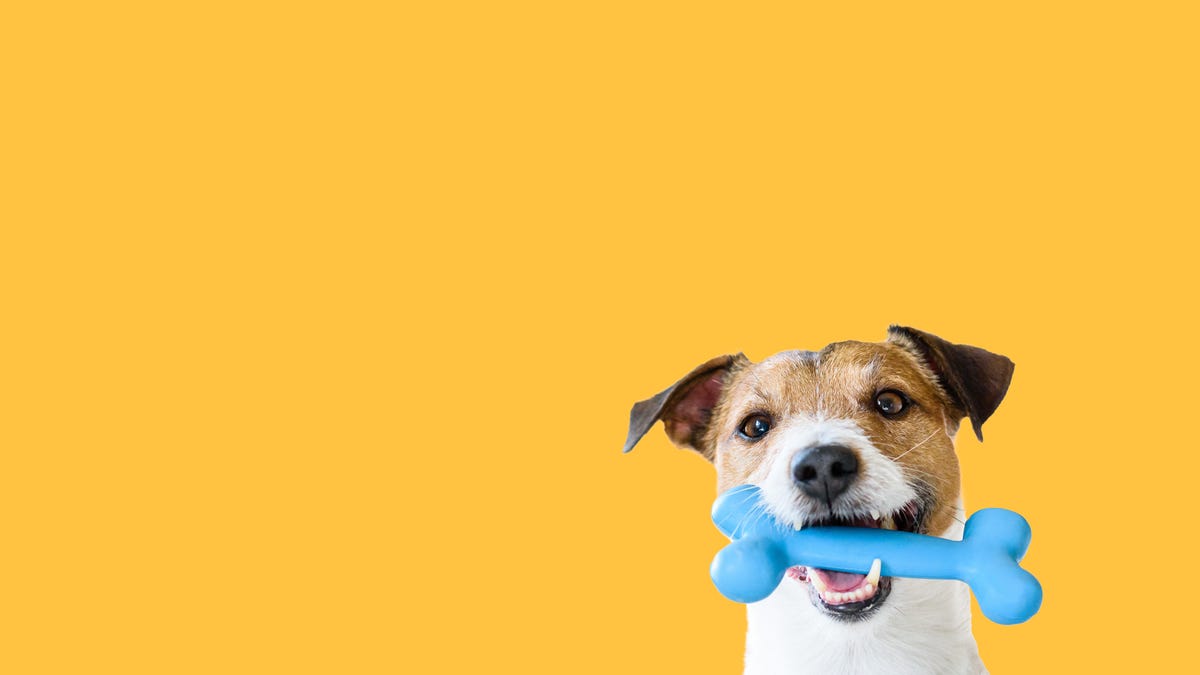Should You Really Only Buy Blue Dog Toys? - 4 minutes read

Dog owners often take canine comforts to dizzying extremes, like feeding their dogs home-cooked meals or enrolling them in fancy sleep away camps. When it comes to shopping for dog toys, it’s become popular to factor in the color of said toy when striving to make the best possible purchase.
Since dogs are red-green colorblind and do not visually (or physically) navigate the world like their bipedal, human companions, some layman experts insist that dog toys be blue—a color that should stand out quite vividly to a dog frolicking in a grassy, green field or among some autumn foliage.
But does the color of a dog’s toy actually matter that much? You don’t need to be a veterinarian to know that dogs rely heavily on their sense of smell to make sense of their surroundings, and that other stimuli inform their understanding of the physical world more than vision. So should you follow the advice of Reddit, or maybe take your cues from the small body of scientific literature that suggests a blue toy matters?
Color doesn’t matter as much as other factors
A dog’s preference for toys isn’t so much informed by color, but by a number of different stimuli. When it comes to visual perception, the issue of brightness matters just as much as general color, according to Sarah-Elizabeth Byosiere, director of the Thinking Dog Center at The City University of New York. She explains that dogs are dichromatic, meaning they only have two cone photoreceptor cells that can detect blues and yellows, whereas humans have three that discern combinations of red, blue, and green.
But when it comes to a dog’s detection of similar colors, brightness is key in parsing the subtle differences. “Two shades of a similar color are still discernible and identifiable when they only vary in brightness,” she told Lifehacker, before expanding on the relationship between brightness and color for dogs.
The takeaway is that a green tennis ball isn’t necessarily much more difficult for a dog to see as it rolls through a field of grass or astroturf, as long as minute differences in color are reflecting a certain stimulus, like sunlight, for example. She explained:
Color perception can change based on the brightness of a given stimulus. As light bounces off these stimuli, like a red ball being tossed on green grass, the colors reflect light differently. Dogs are sensitive to changes of brightness, so the while the colors of the ball and grass may not look like red and green to a dog, likely they still vary in how bright they are.
There’s also the issue of texture. Similar to humans, dogs often rely on the differences in texture and shapes of their surroundings to differentiate toys from plants or mounds of dirt, for example. Byosiere details another situation that speaks to how dogs navigate their surroundings without relying on color:
If you can imagine seeing a brown ball tossed on brown grass, you could probably still identify an object being present because the structure/outline of the ball is different from the structure of the grass. One is skinny and lanky, while the other is round and has different edges. It may take a bit longer but you likely would be able to find it using other cues (beyond color).
How do you pick the right toy?
The issue isn’t as complicated as you might think. The veterinarian Valerie Patton tells Lifehacker that a dog’s preference for a toy is pretty similar to a child’s proclivity to gravitate towards certain toys.
She wrote in an email:
I have found that the texture, the size and the ability to destroy it, or whether or not it has a squeaker, makes the toy a keeper or not. Like kids, dogs have reasons for liking certain toys that sometimes we can understand and sometimes we can’t.
And while concerning yourself with a toy’s color indicates that an owner is laudably considering their dog’s preference, it’s probably better to let your dog decide what toy they prefer. As Byosiere says, picking a toy largely based on its color “just oversimplifies and underestimates dog’s perceptual abilities.” Instead, owners should buy their dogs a multitude of toys and let their pets figure out what toy they like best.
Byosiere details the best way to go about this:
Give them choices in the objects they play with, rotate toys so they never get boring (don’t leave them around the house always accessible) and find creative ways to mentally enrich your pup with novel and adaptations to the toys they have.
And with that in mind, your dog will be chewing their favorite toy or tennis ball to pieces in no time, regardless of its color.
Source: Lifehacker.com
Powered by NewsAPI.org